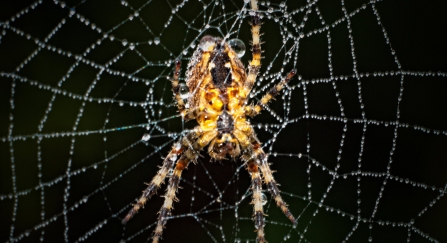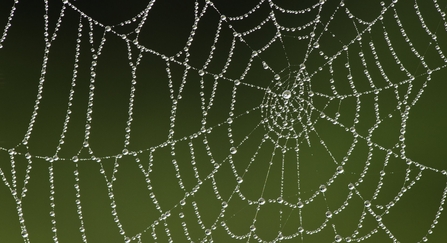Spiders are feared by many and known by few. There are about 650 species of spiders in the UK. The truth about spiders is that they are ferocious predators and fantastically effective at ridding gardens of common insect pests such as aphids. It is estimated that spiders across the UK eat as many as 400 to 800 million tons of insects a year.
Most of us will start to notice spiders in September, this is not because the spiders are cold and looking for warmth, it is the time of year spiders start to mate. Males will start their search for females to mate with.







